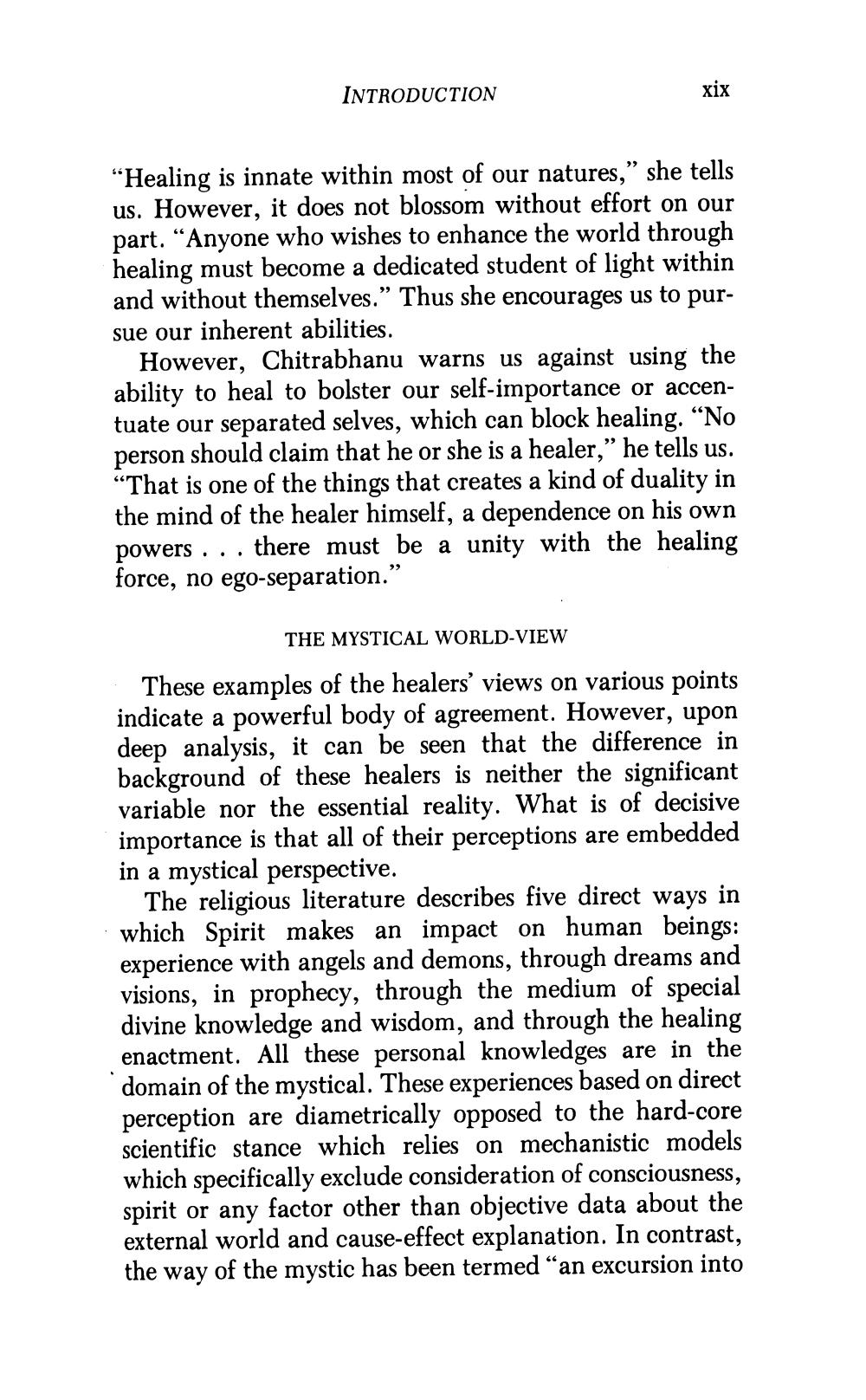________________
INTRODUCTION
xix
“Healing is innate within most of our natures,” she tells us. However, it does not blossom without effort on our part. “Anyone who wishes to enhance the world through healing must become a dedicated student of light within and without themselves.” Thus she encourages us to pursue our inherent abilities.
However, Chitrabhanu warns us against using the ability to heal to bolster our self-importance or accentuate our separated selves, which can block healing. “No person should claim that he or she is a healer,” he tells us. “That is one of the things that creates a kind of duality in the mind of the healer himself, a dependence on his own powers . . . there must be a unity with the healing force, no ego-separation."
THE MYSTICAL WORLD-VIEW These examples of the healers' views on various points indicate a powerful body of agreement. However, upon deep analysis, it can be seen that the difference in background of these healers is neither the significant variable nor the essential reality. What is of decisive importance is that all of their perceptions are embedded in a mystical perspective.
The religious literature describes five direct ways in which Spirit makes an impact on human beings: experience with angels and demons, through dreams and visions, in prophecy, through the medium of special divine knowledge and wisdom, and through the healing enactment. All these personal knowledges are in the domain of the mystical. These experiences based on direct perception are diametrically opposed to the hard-core scientific stance which relies on mechanistic models which specifically exclude consideration of consciousness, spirit or any factor other than objective data about the external world and cause-effect explanation. In contrast, the way of the mystic has been termed “an excursion into




